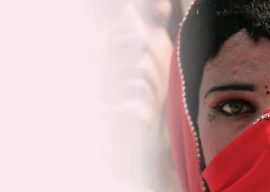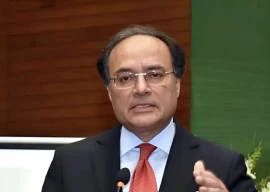
Pakistan’s middle class consists of over 6.27 million people, according to Credit Suisse, a global financial services company.
In its Global Wealth Report 2015 released on Oct 13, Credit Suisse said Pakistan has the 18th largest middle class worldwide.
The study revealed that 14% of world adults constituted the middle class in 2015 and held 32% of world wealth. The share of middle-class adults in Pakistan’s total adult population of 111 million was 5.7% in 2015 as opposed to India’s 3% and Australia’s 66% in 2015.
Middle-class Pakistani adults constituted 0.9% of the worldwide middle-class population. The highest concentration of middle-class population in 2015 was in China (108.7 million), followed by the United States (91.8 million) and Japan (62 million).
Read: Disproportionately: Taxation system not anti-poor but anti-middle class
Defining ‘middle class’
Economists use a variety of methods, such as income and standard of living, to define what constitutes the middle class. Credit Suisse uses the measure of ‘personal wealth’ - or a ‘wealth band’ instead of an ‘income range’ - to determine the size and wealth of the middle class around the world.
Taking the United States as the benchmark country, Credit Suisse considers an adult to be part of the middle class if they have wealth between $50,000 and $500,000 valued at mid-2015 prices.
Credit Suisse came up with the minimum and maximum figures for the US middle-class wealth band based on its median earnings and the amount of capital a person close to retirement age needs to purchase an annuity paying the median wage for the remainder of their life.
Read: Chinese middle class now the world's largest
For the rest of the countries, Credit Suisse uses the IMF series of Purchasing Power Parity (PPP) values to derive equivalent middle-class wealth bounds in local terms.
Being a lower per-capita country, Pakistan has lower prices and consequently a reduced middle-class threshold. To be a member of the middle class in 2015, according to Credit Suisse, a Pakistani adult must have wealth of at least $14,413.

In terms of the local currency that buys one dollar for Rs104 these days, a Pakistani adult should be considered part of the middle class if they have wealth of between Rs1.5 million and Rs15 million.
With $14,413, Pakistan has the third lowest “middle-class lower bound wealth” for 2015, followed by India ($13,662) and Ukraine ($11,258). This suggests Pakistan has lower prices in general, which enables people to join the middle class by crossing a relatively lower threshold of wealth band.
Read: Minding middle class aspirations
Wealth in Pakistan
According to Credit Suisse, total wealth in Pakistan amounted to $495 billion in 2015. Given that the figure stood at $170 billion in 2000, total wealth in Pakistan has increased at an annualised rate of 7.4% for the last 15 years.
Total wealth of the world increased on average by 5.2% annually over the same 15-year period, the report shows.
A little more than 90% Pakistani adults had wealth less than $10,000 in 2015. The share of Pakistani adults with wealth between $10,000 and $100,000 in 2015 was 9.8% while only 0.1% adults owned wealth in the range of $100,000 and $1 million, the report revealed.
Published in The Express Tribune, October 16th, 2015.
Like Business on Facebook, follow @TribuneBiz on Twitter to stay informed and join in the conversation.






















COMMENTS
Comments are moderated and generally will be posted if they are on-topic and not abusive.
For more information, please see our Comments FAQ